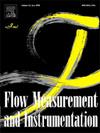CFD simulation-based flow field analysis and structural optimization of the spool in an electro-hydraulic proportional directional valve
IF 2.7
3区 工程技术
Q2 ENGINEERING, MECHANICAL
引用次数: 0
Abstract
During the operation of electro-hydraulic proportional direction valve, the pressure and speed at the valve port will change due to the change of flow area, and the hydraulic oil flow phenomenon is complicated, with large pressure drop and turbulent kinetic energy resulting in large energy loss. In order to restrain the generation and influence of the vortex at the concave corner of the spool, reduce the turbulent kinetic energy, and reduce the energy loss of the proportional direction valve, this paper adds the structure of upper and lower arc and bevel at the spool shoulder, concave angle and the inlet and outlet flow channel to reduce the turbulent kinetic energy and reduce the generation of air pockets and vortices. Firstly, the three-dimensional model was established with UG, and then CFD numerical analysis was carried out with Ansys. The flow field characteristics were analyzed by comparing the simulation results. Secondly, the main parameters of the spool were optimized and analyzed by response surface method to obtain the optimal structural parameters. The results show that the optimized spool can effectively optimize the oil flow condition in the flow channel. Compared with the original spool, the optimized spool can reduce the lowest by 16.5 % and the highest by 38.7 % under the same conditions, effectively reduce the turbulent kinetic energy, inhibit the generation and development of vorticity, and prolong the service life of the spool. Finally, the accuracy of the spool of the spool valve was verified through experiments.
基于CFD仿真的电液比例换向阀阀芯流场分析及结构优化
电液比例方向阀在工作过程中,由于过流面积的变化,阀口处的压力和转速会发生变化,液压油流动现象复杂,压降大,动能湍流,造成能量损失大。为了抑制阀芯凹角处涡流的产生和影响,降低湍流动能,减少比例方向阀的能量损失,本文在阀芯肩、凹角和进出口流道处增加上下圆弧和斜面结构,降低湍流动能,减少气穴和涡流的产生。首先利用UG建立三维模型,然后利用Ansys进行CFD数值分析。通过对比仿真结果,分析了流场特性。其次,采用响应面法对阀芯主要参数进行优化分析,得到最优结构参数;结果表明,优化后的阀芯可以有效地优化流道内的油流状况。与原阀芯相比,优化后的阀芯在相同条件下,最低降低16.5%,最高降低38.7%,有效降低了湍流动能,抑制了涡量的产生和发展,延长了阀芯的使用寿命。最后,通过实验验证了滑阀阀芯的精度。
本文章由计算机程序翻译,如有差异,请以英文原文为准。
求助全文
约1分钟内获得全文
求助全文
来源期刊

Flow Measurement and Instrumentation
工程技术-工程:机械
CiteScore
4.30
自引率
13.60%
发文量
123
审稿时长
6 months
期刊介绍:
Flow Measurement and Instrumentation is dedicated to disseminating the latest research results on all aspects of flow measurement, in both closed conduits and open channels. The design of flow measurement systems involves a wide variety of multidisciplinary activities including modelling the flow sensor, the fluid flow and the sensor/fluid interactions through the use of computation techniques; the development of advanced transducer systems and their associated signal processing and the laboratory and field assessment of the overall system under ideal and disturbed conditions.
FMI is the essential forum for critical information exchange, and contributions are particularly encouraged in the following areas of interest:
Modelling: the application of mathematical and computational modelling to the interaction of fluid dynamics with flowmeters, including flowmeter behaviour, improved flowmeter design and installation problems. Application of CAD/CAE techniques to flowmeter modelling are eligible.
Design and development: the detailed design of the flowmeter head and/or signal processing aspects of novel flowmeters. Emphasis is given to papers identifying new sensor configurations, multisensor flow measurement systems, non-intrusive flow metering techniques and the application of microelectronic techniques in smart or intelligent systems.
Calibration techniques: including descriptions of new or existing calibration facilities and techniques, calibration data from different flowmeter types, and calibration intercomparison data from different laboratories.
Installation effect data: dealing with the effects of non-ideal flow conditions on flowmeters. Papers combining a theoretical understanding of flowmeter behaviour with experimental work are particularly welcome.
 求助内容:
求助内容: 应助结果提醒方式:
应助结果提醒方式:


